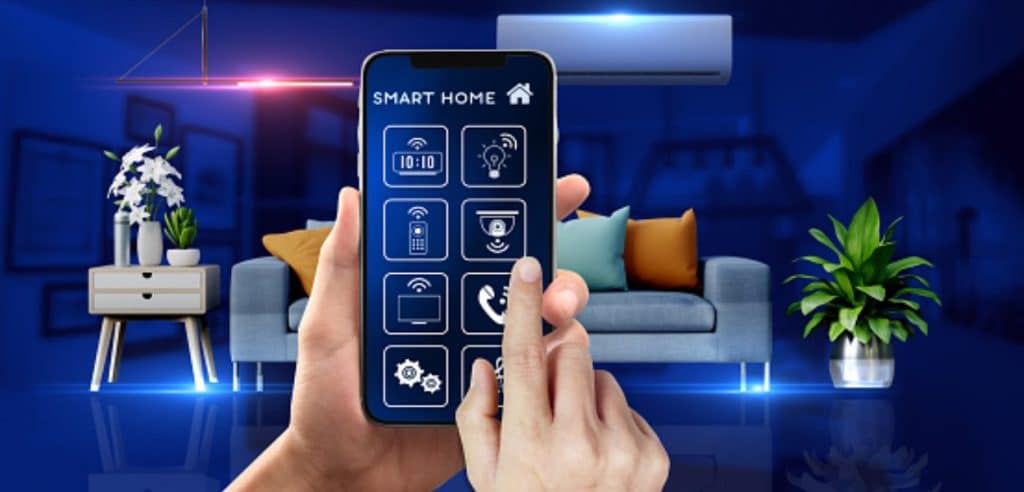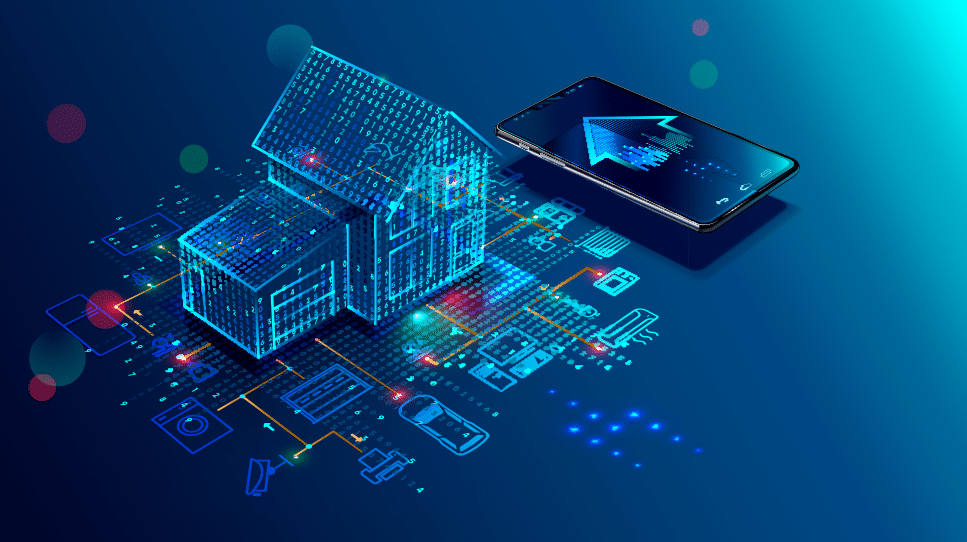The intricate dance between smart home devices and control apps has ushered in a new era of household management. As we navigate the complexities of designing for seamless device interaction, a critical question emerges: how can we ensure that these apps not only facilitate but enhance the user experience? By dissecting the layers of functionality and user interface design, we uncover a world where convenience and efficiency converge. Join us as we explore the nuances of crafting smart home control apps that seamlessly harmonize with the evolving needs of modern consumers.
Understanding the Basics of Smart Home Apps
In the realm of smart home technology, grasping the fundamental concepts of smart home apps is essential for navigating the intricate web of interconnected devices and enhancing household automation. A smart home app serves as the central hub that enables users to control and monitor various smart devices from a single platform. When seeking the best smarthome app, users prioritize seamless integration with a wide range of devices, ensuring that all components work harmoniously together. This seamless integration is achieved through sophisticated IoT mobile app development, where developers leverage cutting-edge technologies to create a cohesive ecosystem within the app.
One of the key features of a top-tier smart home app is its ability to support home voice control, allowing users to interact with their devices through voice commands. This feature enhances convenience and accessibility, transforming the way users engage with their smart devices. Moreover, a well-designed smart home app should offer intuitive controls and a user-friendly interface to simplify the management of multiple devices. By understanding the intricacies of smart home apps and embracing the principles of effective design and functionality, users can harness the full potential of their smart devices and elevate their home automation experience.
Key Features of the Best Smart Home Apps
When it comes to the best smart home apps, user-friendly design features play a crucial role in enhancing the overall experience. These apps should offer seamless integration capabilities with a wide range of devices to ensure comprehensive control and management for users. By prioritizing intuitive design and versatile device compatibility, the best smart home apps set the standard for efficient and user-centric home automation solutions.
Essential Features of Smart Home Apps
| Feature Category | Importance (High/Medium/Low) | Description |
|---|---|---|
| Seamless Integration | High | Ensures that the app works flawlessly with a variety of smart home devices from different manufacturers. |
| Intuitive User Interface | High | A user-friendly interface that allows users to easily navigate and control their home devices. |
| Security Features | High | Advanced security protocols to protect users from unauthorized access and ensure data privacy. |
| Voice Control Capabilities | Medium | Allows users to control devices through voice commands, enhancing convenience. |
| Customization | Medium | Offers users the ability to personalize settings and controls to suit their preferences. |
| Energy Management | Low | Provides tools for monitoring and reducing energy usage through smart automation. |
Exploring User-Friendly Design Features
When looking at the key features of the best smart home apps, customization options for a personalized experience and real-time alerts and notifications functionality stand out as essential components. The ability for users to tailor their app settings to suit their preferences ensures a more user-centric approach, enhancing overall satisfaction and usability. Additionally, real-time alerts and notifications keep users informed and connected to their smart home devices, providing a seamless and proactive experience.
Customization Options for Personalized Experience
User personalization is a pivotal aspect of the best smart home control apps, offering tailored customization options for a truly individualized experience.
- Customizable Dashboard: Arrange devices for quick access.
- Personalized Settings: Adjust preferences for each device.
- Theme Selection: Choose interface colors and styles.
- Notification Preferences: Set alerts based on personal needs.
- User Profiles: Create multiple profiles for different users.
Real-Time Alerts and Notifications Functionality
The enhancement of user experience in smart home control apps extends to the implementation of real-time alerts and notifications functionality, providing users with immediate updates and insights into their connected devices. These real-time alerts enable users to stay informed about the status of their smart devices, ensuring timely responses to events like security breaches, abnormal device behavior, or energy consumption spikes, enhancing overall convenience and peace of mind.
Integration Capabilities with Various Devices
With a focus on seamless device interaction, the best smart home apps excel in their integration capabilities with various devices, elevating user experience and optimizing home automation functionalities. These apps boast the following key features:
- Cross-Device Compatibility: Ensuring connectivity across a wide range of smart home devices.
- Customizable Device Grouping: Allowing users to create personalized groups for simultaneous control.
- Automation Scheduling: Enabling users to set routines and schedules for automated device actions.
- Voice Control Integration: Supporting voice commands for hands-free device management.
- Remote Access: Providing users with the ability to control devices from anywhere via mobile devices.

Challenges in IoT Mobile App Development
Developing IoT mobile apps for smart home control presents significant challenges, primarily centered around ensuring seamless compatibility across a diverse range of devices. From smart thermostats to security systems, maintaining reliable performance amidst varying network conditions is crucial for user satisfaction. Overcoming these obstacles demands a meticulous approach to app design and implementation to guarantee a smooth and efficient user experience.
Navigating Compatibility Issues Across Devices
Efficiently managing compatibility issues across devices remains a critical challenge in the realm of IoT mobile app development. Ensuring seamless interaction between a diverse range of smart devices requires meticulous attention to detail and proactive problem-solving strategies. To navigate these challenges effectively, developers must consider the following:
- Device Fragmentation: Various manufacturers and models may have different communication protocols.
- Operating System Variances: Compatibility discrepancies between iOS, Android, etc., can impact app functionality.
- Firmware Updates: Incompatibilities arising from outdated firmware versions can hinder device connectivity.
- Third-Party Integrations: Incorporating third-party services may introduce additional compatibility complexities.
- User Interface Adaptability: Designing interfaces that cater to different device screen sizes and resolutions is crucial.
Ensuring Reliable Performance Under Varying Network Conditions
Managing compatibility challenges is pivotal in IoT mobile app development, and another critical aspect to consider is ensuring reliable performance under varying network conditions. The real-time nature of smart home control apps necessitates consistent connectivity for seamless device interaction. However, fluctuations in network stability, bandwidth limitations, or latency issues can hinder app performance. To address these challenges, developers must implement robust error-handling mechanisms, optimize data transmission protocols, and prioritize essential functions to maintain app functionality even in adverse network conditions.
Utilizing caching mechanisms, predictive algorithms, and offline modes can help mitigate the impact of network disruptions, ensuring a reliable user experience regardless of the network environment. By prioritizing performance under varying network conditions, smart home control apps can deliver consistent and reliable service to users, enhancing overall satisfaction and usability.
The Role of Seamless Integration in Smart Home Control
Facilitating smooth incorporation of various smart devices into a unified system is essential for optimizing user experience in smart home control applications. Seamless integration plays a pivotal role in ensuring that the user can effortlessly interact with and manage a diverse range of smart devices within their home environment. Here are key aspects highlighting the importance of seamless integration in smart home control:
- Interoperability: Ensuring that different devices from various manufacturers can communicate and work together harmoniously.
- Unified Control: Providing users with a centralized platform to monitor and control all smart devices from one place.
- Automated Synchronization: Allowing devices to sync and coordinate actions automatically, enhancing convenience and efficiency.
- Customization Capabilities: Offering users the flexibility to personalize settings and preferences across different devices.
- Scalability: The ability to easily expand the smart home ecosystem by integrating new devices without disruptions to the existing setup.
These elements collectively contribute to a cohesive smart home control experience, where the integration of devices is seamless, intuitive, and enhances the overall functionality and convenience for users.

Advancements in Home Voice Control Technologies
Recent advancements in home voice control technologies have revolutionized the way users interact with their smart devices, enhancing convenience and accessibility in smart home environments. Voice control has become a popular method for managing smart devices due to its hands-free operation and natural language processing capabilities. Virtual assistants like Amazon’s Alexa, Google Assistant, and Apple’s Siri have made significant strides in understanding and executing user commands effectively, enabling users to control a wide range of devices simply by speaking.
One key advancement in home voice control technologies is the improved accuracy and responsiveness of virtual assistants. These systems now boast enhanced voice recognition algorithms that can differentiate between users’ voices, even in noisy environments, leading to more accurate command execution. Additionally, advancements in natural language processing have made interactions with smart devices more intuitive, allowing users to speak commands in a more conversational manner.
Moreover, the integration of voice control with smart home ecosystems has streamlined device management. Users can now control multiple devices simultaneously through a single voice command, creating a seamless and efficient user experience. This level of integration not only simplifies daily tasks but also enhances the overall functionality of smart homes, making them more responsive to users’ needs. As voice control technologies continue to evolve, they are expected to play an increasingly significant role in shaping the future of smart home interactions.
Design Principles for Effective Smart Home Apps
Effective smart home apps prioritize minimalist design principles to enhance usability. By simplifying interfaces and eliminating unnecessary clutter, users can navigate the app effortlessly and focus on controlling their smart devices efficiently. This approach ensures that users can easily access features and functionalities without being overwhelmed, ultimately leading to a more seamless and intuitive user experience.
Applying Minimalist Design for Better Usability
In crafting smart home control apps, the utilization of minimalist design principles plays a pivotal role in enhancing user usability and experience. Embracing simplicity and clarity in design not only improves the aesthetics of the app but also streamlines functionality for users. Here are five key benefits of applying minimalist design principles in smart home control apps:
- Enhanced User Focus: Minimalist design reduces distractions, allowing users to focus on essential tasks.
- Simplified Navigation: Clear and concise interfaces make it easier for users to navigate through the app seamlessly.
- Faster Task Completion: Minimalist designs often lead to quicker task completion due to reduced complexity.
- Improved Aesthetic Appeal: Clean and minimalist interfaces are visually appealing and create a modern look.
- Enhanced User Engagement: Users are more likely to engage with an app that offers a straightforward and intuitive design.
Security Concerns with Smart Home App Development
Security remains a paramount consideration in the development of smart home control apps due to the sensitive nature of the data and devices they handle. As these apps act as the central hub for managing various smart devices within a household, they become a prime target for cyber threats and unauthorized access. Developers must implement robust security measures to safeguard user privacy, prevent data breaches, and protect against malicious attacks.
One of the primary security concerns with smart home app development is the potential vulnerability of interconnected devices. The interconnected nature of smart homes means that a breach in one device could have cascading effects, compromising the entire network. Therefore, developers need to ensure that communication between devices is encrypted, and proper authentication mechanisms are in place to prevent unauthorized access.
Moreover, the collection and storage of sensitive data, such as user preferences, schedules, and even video feeds from security cameras, pose significant security risks if not adequately protected. Strong encryption methods and secure data storage practices are essential to prevent data leaks and unauthorized access to personal information.

Future Trends in Smart Home Automation
With the continuous advancements in technology and the increasing interconnectedness of smart devices, the landscape of smart home automation is poised to witness transformative developments in the near future. As innovation accelerates, several key trends are shaping the future of smart home automation:
- AI Integration: Artificial intelligence will play a crucial role in enhancing automation processes, enabling predictive capabilities and personalized experiences for users.
- Voice Control Evolution: Voice assistants like Alexa and Google Assistant will continue to evolve, becoming more intuitive and seamlessly integrated into smart home ecosystems.
- Energy Efficiency: There will be a greater emphasis on energy-saving solutions, with automation systems optimizing energy usage based on patterns and user preferences.
- Enhanced Security Features: Security will remain a top priority, leading to the development of advanced encryption protocols and biometric authentication methods.
- Interoperability Standards: Efforts to establish universal standards for smart devices will increase, promoting interoperability and simplifying the user experience across different brands and products.
These trends reflect a future where smart home automation is not only more sophisticated and efficient but also more user-friendly and secure, catering to the evolving needs of modern households.
User Interface Design Tips for Smart Home Apps
User interface design plays a pivotal role in shaping the user experience and functionality of smart home control apps. To ensure an intuitive and seamless interaction, here are some essential tips for designing user interfaces for smart home apps:
- Simplify Navigation: Keep the interface clean and organized, with easy-to-find controls for different devices and functions. Implementing a clear navigation structure helps users locate and operate devices effortlessly.
- Visual Consistency: Maintain a consistent design language throughout the app to establish familiarity and aid user understanding. Consistent icons, colors, and layouts contribute to a cohesive user experience.
- Prioritize Key Functions: Identify the most frequently used functions and prioritize them in the interface. Make essential controls easily accessible to minimize user effort and streamline interactions.
- Feedback and Confirmation: Provide visual feedback, such as animations or notifications, to confirm user actions. Clear feedback enhances user confidence and reduces errors during device control.
- Customization Options: Allow users to personalize the interface based on their preferences. Offering customization options for layouts or themes can enhance user engagement and satisfaction.

Happy Digital’s Guide for How to Choose the Right Smart Home App
To make an informed choice when selecting a smart home app, users should consider a set of criteria that align with their specific needs and preferences. When looking for the right smart home app, consider the following factors:
- Compatibility: Ensure that the app is compatible with the smart devices you currently own or plan to purchase.
- User Interface: Look for an app with an intuitive and user-friendly interface to make interaction with your devices seamless.
- Security Features: Prioritize apps that offer robust security measures to protect your data and privacy.
- Customization Options: Choose an app that allows you to customize settings and preferences according to your lifestyle and routines.
- Integration Capabilities: Opt for an app that supports integration with a wide range of smart devices for a more interconnected smart home experience.
Comparison of Top Smart Home Apps
| Feature | App A | App B | App C |
|---|---|---|---|
| User Interface | Simple & Clean | Modern & Intuitive | Classic & Detailed |
| Device Compatibility | High | Moderate | Low |
| Voice Control Integration | Yes | Yes | No |
| Real-Time Notifications | Yes | No | Yes |
| Customization Options | Limited | Extensive | Moderate |
| Cost | Free | Subscription | One-time fee |
| User Ratings (out of 5) | 4.5 | 4.0 | 3.5 |
Comprehensive Software Development Solutions
Unlock the potential of digital transformation with our bespoke software development services, engineered to foster innovation, maximize efficiency, and catalyze business growth.
Conclusion
In conclusion, smart home control apps play a crucial role in streamlining the management and operation of smart devices within households. By offering a centralized platform for user interaction and device control, these apps enhance efficiency and enable seamless automation. Despite challenges in IoT mobile app development and security concerns, advancements in technology continue to improve the user experience and drive innovation in smart home automation. As the industry evolves, designing intuitive interfaces and prioritizing integration will be key in shaping the future of smart home technology.
How Do Smart Home Control Apps Impact Energy Efficiency in Households?
Smart home control apps play a pivotal role in optimizing energy efficiency within households. By providing centralized control over smart devices like thermostats and lighting, these apps enable users to monitor and adjust energy usage, leading to cost savings and environmental benefits.
What Are Some Potential Privacy Concerns Associated With Using Smart Home Control Apps?
Potential privacy concerns associated with using smart home control apps include data breaches, unauthorized access to personal information, and surveillance risks. Users must carefully review app permissions, secure their networks, and regularly update devices to mitigate these risks.
Can Smart Home Control Apps Be Integrated With Virtual Assistants Like Amazon Alexa or Google Assistant?
Smart home control apps can seamlessly integrate with virtual assistants like Amazon Alexa or Google Assistant. This integration enhances user convenience by allowing voice commands for controlling smart devices, creating a more intuitive and efficient smart home experience.
Are There Any Specific Regulations or Standards That Developers Need to Adhere to When Creating Smart Home Control Apps?
When creating smart home control apps, developers must adhere to specific regulations and standards to ensure compliance with data privacy, security, and interoperability requirements. Following industry guidelines and best practices is essential for providing a safe and reliable user experience.


